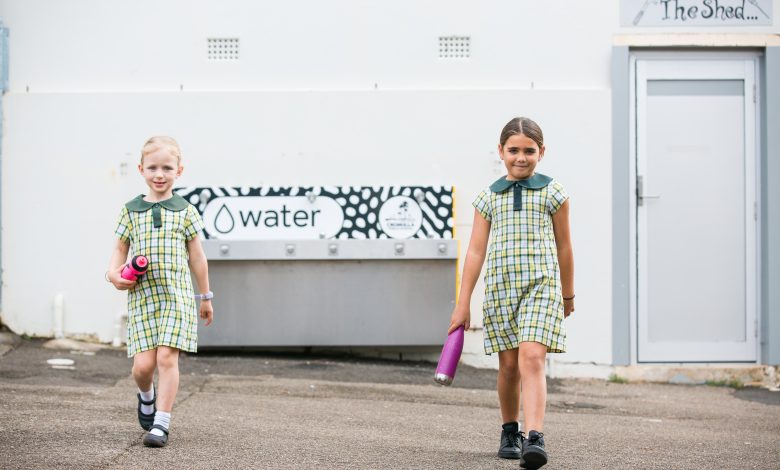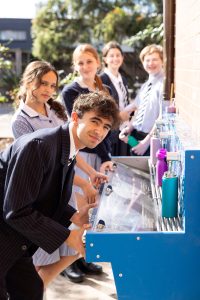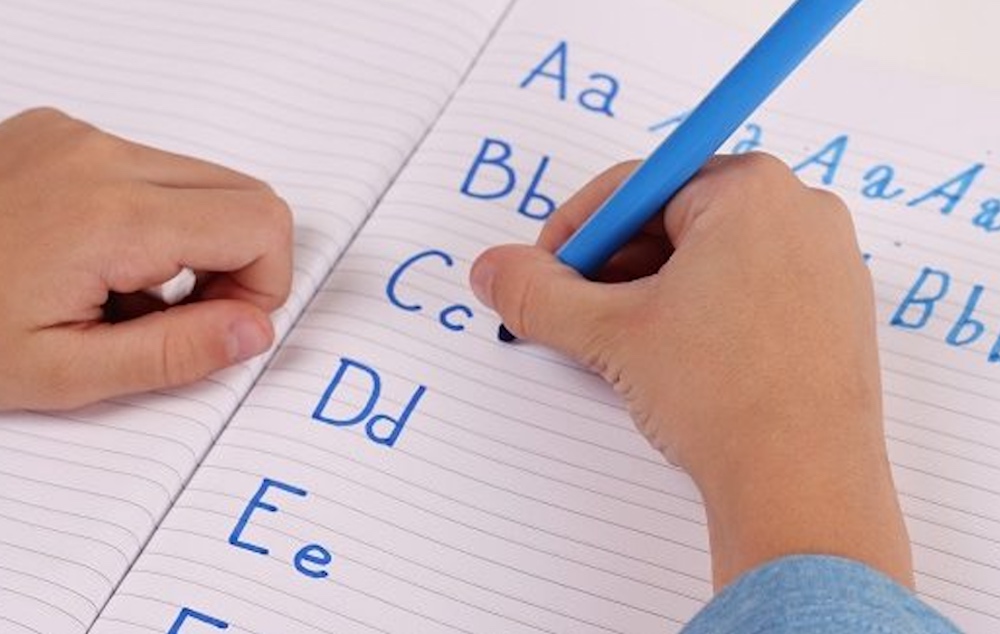Quench that thirst and get a learning burst
About half of school-aged children are underhydrated. We explore drinking water options for schools, that are fun and functional.

Feeling thirsty? Quick! Have a drink.
By the time you feel thirsty, you are already starting to dehydrate, and your body is prompting you to act. Prevention then, is the best protection, meaning everyone should drink water regularly throughout each day.
Read the Term 3 edition of School News HERE
Australian Government guidelines recommend school aged children drink between 1200mL and 1900mL of water per day, depending on their age. More water is needed when the weather is hot, and during and after physical activity.
A 2019 American study found that 1 in 5 children and adolescents do not drink any plain water during the day, and about half of school-aged children are underhydrated. A second study echoed this, concluding that 54 percent of children surveyed were underhydrated, with higher rates of underhydration in younger children and boys.
Most of a child’s body is made up of water, so adequate fluid is essential in ensuring the body can function at its best. Proper hydration has been linked to improved concentration, attention, focus and mood. In a school setting, this can lead to a calmer, happier classroom, and improved learning outcomes. In most areas of Australia, tap water contains fluoride, making drinking water an important part of mouth hygiene.
Physically, drinking water helps the body to function correctly. We need water for digestion, to absorb nutrients, to regulate body temperature, to help us move, and eliminate toxins. Even mild dehydration can lead to irritability, fatigue, headaches, and lack of concentration. Making sure students have access to drinking water throughout the school day will optimise their learning potential.

Freely available from the tap, water is a much more budget friendly option that fruit juice or soft drinks. These products, as well, are often high in sugar and additives, making them a less healthy choice than water.
Some practical steps can be taken at school to encourage children to drink water regularly. Before school and at the end of break times, children could be prompted to have a drink of water before returning to the classroom to resume learning. This reminder can help build healthy habits that students will take with them throughout their educational journey, as they learn to independently choose to have a drink at these times.
Asking students to bring in a water bottle to keep on their desk provides a visual reminder to students to have a drink. To make things more interesting, students can add some natural flavour to their water bottle before bringing it to school, by adding orange or lemon slices, cucumber, mint, or fresh berries. Encouraging the use of refillable water bottles, rather than disposable bottles, will help to reduce the school’s waste and facilitate sustainable practices.
In the schoolyard, ensure there are plenty of drinking stations for students to rehydrate on the go, and refill their water bottles. Options are now available for hands-free drinking, including sensor and foot pedal activation. Filtration systems can be added to drinking stations. These systems remove impurities and contaminants, providing a reliable source of high-quality drinking water.
Evelyn Prooper from water solutions supplier Civiq said there is a real battle of the beverages!

“Teachers work hard to foster healthy habits. We all know how important it is to fight plastic waste, and to choose water over sugary beverages. Those unhealthy beverages are everywhere. Ready to pounce with sneaky tactics. Cleverly designed using bright colours and clever words to mesmerise our kids.
“And then you’ve got those outdated drinking fountains which have the appeal of a soggy sandwich left in a backpack for a week. Nobody wants a taste.”
So, Ms Prooper said, it is time to shake things up. “Imagine your school’s drinking fountain as a superhero power source. A wellspring of energy, bestowing supercharged hydration upon students and teachers alike. Witness the transformation of H2O into a refreshing elixir.
“It’s time to rethink old-school drinking fountains. Create an environment where health and sustainability are exciting. Breathe life into the old bubbler with vibrant art and cool designs. Commercial brands make their drinks irresistible with graphics. Schools should do the same with drinking fountains.
“First, update your drinking fountain to include water bottle refill stations. Next, add splashes of colour with graphics and art. Draw inspiration from your school’s colours, logo, and values. Consider incorporating Aboriginal Art or students’ own creative expressions. How about messages promoting sustainability, inclusivity, or anti-bullying?
“Let’s reclaim health and protect the environment with fresh, fun, and clean fountains. Fight the battle of the beverages. And watch those unhealthy drinks tremble as schools seize victory.”







